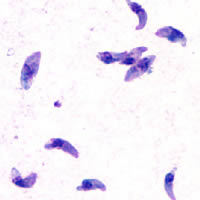
Photo from wikipedia
Abstract A controlled physical method without any solvent was used to grow Ag nanoparticles on TiO 2 by use of mercaptoacetic acid as a bifunctional surface modifier. The fabricated Ag-TiO… Click to show full abstract
Abstract A controlled physical method without any solvent was used to grow Ag nanoparticles on TiO 2 by use of mercaptoacetic acid as a bifunctional surface modifier. The fabricated Ag-TiO 2 tight heterojunction was proposed as an innovative photocatalytic material. The particle size, chemical nature, morphology, and chemical bonding between mercaptoacetic acid, Ag, and TiO 2 were characterized by UV–vis absorption spectroscopy, powder X-ray diffraction, Raman spectroscopy, transmission electron microscopy, and scanning electron microscopy. The photocatalytic activity of TiO 2 combined with the excellent electron acceptor abilities and visible light absorption of small spherical Ag nanoparticles resulted in efficient photoinduced degradation of a cationic organic pollutant (methylene blue) under UV–vis light. The nanocatalyst material obtained with a sputter time of 30 s under simulated sunlight results in almost complete degradation (97%) of methylene blue after 120 min. The particle size, tight attachment to TiO 2 , and distribution of Ag nanoparticles were controlled for the first time through a physical method by use of controlled chemical bonding to bifunctional surface modifiers and an appropriate sputter deposition time.
Journal Title: Journal of Physics and Chemistry of Solids
Year Published: 2018
Link to full text (if available)
Share on Social Media: Sign Up to like & get
recommendations!